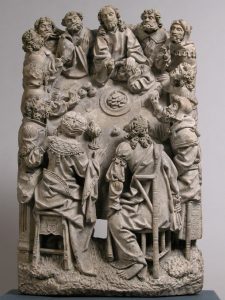The Turn Ausgabe 2 – Sprache und Zeichen
The Turn ist eine Zeitschrift für islamische Philosophie, Theologie und Mystik.
Die Zeitschrift erscheint halbjährig und kostet in gebundener Form 10 Euro (8 Euro bei einem Abonnement).
Ihre Bestellung senden Sie bitte an die E-Mail-Adresse info@almustafa.de.
About
Über die Ausgabe
Herausgeber
Al-Mustafa Institut Berlin
Redaktion
Michael Nestler
Prof. Dr. Mahdi Esfahani
Wissenschaftlicher Beirat
Prof. Dr. Christoph Böhr
Prof. Dr.Wolfgang Gantke
Prof. Dr.Peter Gerdsen
Prof. Dr. Eveline Goodman-Thau
Prof. Dr. Harald Seubert
Prof. Dr. Hamid Reza Yousefi
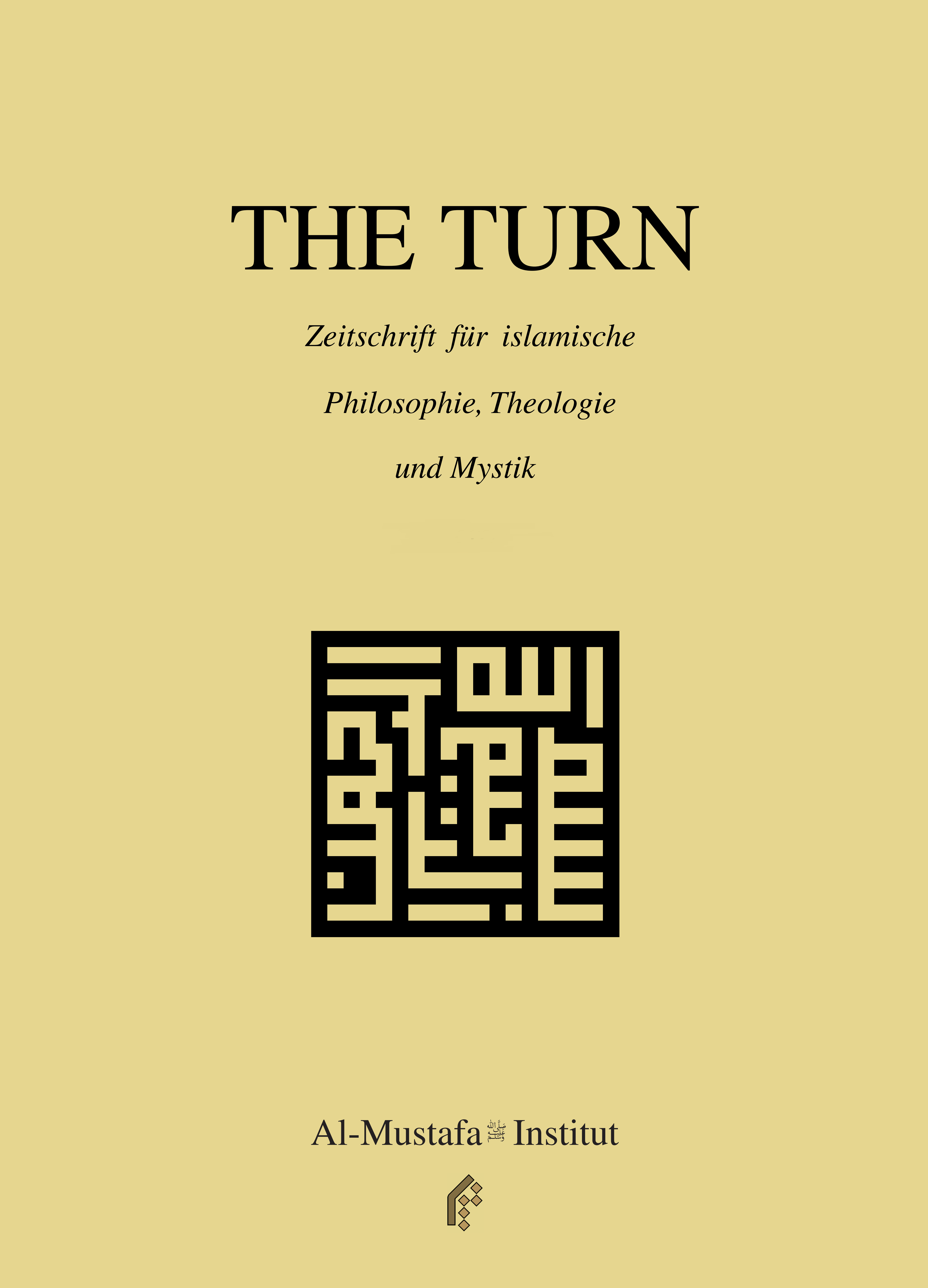
Preamble
Vorwort
In der Zweiten Ausgabe zum Thema “Sprache und Zeichen” nähern sich die Autoren diesen beiden Begrifflichkeiten auf unterschiedliche Art und Weise und unternehmen ihrerseits den Versuch einer Definition:
-
Roman Singendonk diskutiert in seinem Essay “Die Sprache der Dinge – zur Bedeutung von Museumsobjekten für den gesellschaftlichen Diskurs” den stetigen Wandel der Museen in Hinblick auf gesellschaftlicher Anforderungen. Hierbei konzentriert er sich auf die ausgestellten Objekte und die Art und Weise ihrer gesellschaftlichen Wirkungskraft.
-
Der philosophisch-theologische Beitrag “Der Körper und die religiöse Sprache” von Mahdi Esfahani behandelt die Entstehung der religiösen Sprache in Abhängigkeit des menschlichen Körpers. Hierbei geht der Autor von der These aus, dass der Mensch nur aufgrund seiner körperlichen Beschaffenheit die Sprache zu verstehen vermag.
-
Hartmut Zinser schafft mit seinem Artikel “Säkularisierung – Wiederkehrt der Religionen – Postsäkularismus” einen soziologischen Blick auf den Säkularisierungsprozess innerhalb der europäischen Gesellschaften. Hierbei bespricht der Autor die Konsequenzen für eine moderne, postsäkulare Gesellschaft, wenn Religionen den Anspruch auf eine gesellschaftliche Mitbestimmung fordert.
-
Kamil Öktem geht in seinem Beitrag “Sprachwissenschaft und Theologie (kalām) als exegetische Prämisse und Verstehenskontext in dem Korankommentar at-Tafsīr al-kabīr des Faḫr ad-Dīn ar-Rāz am Beispiel der Gottesschau in Q 6:103″ der Bedeutung der Sprachwissenschaft für die Schriftauslegung nach und gibt eine Übersicht ihre verschiedenen methodischen Ansätze wieder.
-
Der Artikel “Mīr Dāmād und die Schule von Isfahan – Einheit und Differenz von Philosophie, kalām und Überlieferung” von Sedigheh Khansari Mousavi zeigt die beinahe bedingte Beziehung zwischen Theologie und Philosophie, in dem die Autorin die im kalām geführten Debatte um die Handlungstheorie und das Prinzip der Kausalität erörtert.
-
Ali Asghar Mosleh bespricht in seinem Artikel “Beyond cultural barriers, Islamic mysticism and intercultural insights” die Überwindung kultureller Barrieren und den Umgang mit “Anderen bzw. Fremden”. Darin beleuchtet der Autor die Rolle der Mystik und ihre Bedeutung für den interreligiösen bzw. interkulturellen Dialog. Hierfür untersucht er die Gründe der Entstehung der islamischen Mystik und ihre Entwicklung im Iran.
-
Der studentische Beitrag über den göttlichen burhān im Kontext der Josefgeschichte (Q 12:24) von Maassouma Dabbous untersucht die etymologische und exegetische Bedeutung des sogenannten “Zeichens”, welches Joseph bei der Verführung Zulaiḫās begegnete. Die Autorin untersucht ihre Bedeutungsmöglichkeit anhand dreier unterschiedlicher Korankommentare, die jeweils eigene Antworten geben.
Table of contents
Inhaltsverzeichnis
The Language of Things - On the Significance of Museum Objects for Social Discourse (Die Sprache der Dinge - zur Bedeutung von Museumsobjekten für den gesellschaftlichen Diskurs) - by Roman Singendonk
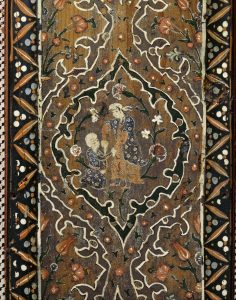
Museums are changing worldwide today, being fundamentally restructured and exposed to a variety of internal and external requirements. This highly charged process is needed to preserve and renew the importance of museums and their collections to society as a whole. The article begins with a discussion of this transformation and highlights the potential of museums and their social impact. In doing so, author focuses on the heart of all museums, on the objects themselves. Referring to the title of this volume, the author traces the language of the museum objects and discusses what they can tell us. But can things even talk? And if so, what stories do they tell us? Can we even understand them or are we too distracted? The language of things teaches us a lot about human history and in the best case also about their present and future. So it pays to listen ca
The body and religious language (Der Körper und die religiöse Sprache) - by Mahdi Esfahani

In this article, the author discusses the relationship between the human body and the emergence of religious language, starting with the thesis that the nature of the human body has a direct effect on the determination of language, and that we only understand the meaning of words in accordance with our physical disposition. In this thorough philosophical-theological treatise on Being, speech, the body and prophetology, Qur’anic textual examples and Islamic traditions are used to explain how body and language interrelate and what conclusions can be drawn from this for the centuries-old theological debate on the “anthropomorphisms” in the Qur’an.is nothing far away or abstract. It is rather the penetration of everything. A flower, for example, not only shows itself in its finitude but also testifies with its existence to the infinity of God and thus points a way to God. The more one tries to fathom the given signs, the more the divine infinity manifests itself. Therefore, if sense is equated with finitude, the alleged nonsensicality of the infinite in fact has its own sense in the finite creature.
Secularization - the Return of Religions - Post-secularism (Säkularisierung - Wiederkehrt der Religionen - Postsäkularismus) - by Hartmut Zinser
doi: https://doi.org/10.53100/ttrnn212ujgfg_3
The searching after meaning arises from a deep desire of mankind. The question “What is desire?” is answered by various artists and thinkers who significantly shaped and developed intellectual history. Desire has been considered and defined differently during the various ages, whether as an attempt to compensate for a personal deficit or as a feeling of being drawn towards the opposite gender. This article also looks at the eras of Enlightenment and Romanticism, covering not only the understanding of desire, but also the different forms of expression used to treat the question of desire: for Example in the painting entitled “Wanderer above the Sea of Fog” (translated into English) by Caspar David Friedrich and the symbol of “The Blue Flower” in the painting of Phillip Otto Runge, but also the fairy tales of the Brothers Grimm, we can see that the feeling of desire has continuously evolved. It arises from the soul of a primal desire which is the engine of all the creative activities.
Kamil Öktem: Linguistics and theology (kalām) (Sprachwissenschaft und Theologie (kalām) ) - by Kamil Öktem

What significance does linguistics have for the discipline of Qur’an exegesis? Kamil Öktem takes up this question in his essay on ar-Rāzī’s Qur’an commentary and gives an overview of the various hermeneutic approaches and definitions of this Islamic discipline. He shows in the case study of the divine vision in Paradise (ru’yat Allāh), which is discussed in Q 6:103, how ar-Rāzī in his Qur’an commentary at-Tafsīr al-kabīr applies theological and linguistic knowledge. After a detailed methodical examination of ar-Rāzī’s interpretation of Q 6:103, he concludes that, on the one hand, “linguistics were a very important and functionally crucial element in the early Qur’an exegesis” and, on the other hand, that there is great scope for interpretation in the theological discussions taking place in the Kalām discussions.in view of an awareness of empirical as well as historical human sciences. The author calls for the “self-historicization” and a “humanized enclosure” of the religions. For this purpose, it is necessary to critically analyze the texts and traditions and be willing to say farewell to outdated traditions and interpretations in order to be open for the future of new exegesis, which satisfies the scientific demand. The author takes up a much-discussed Islamic tradition in order to show that Kant’s categorical imperative has also to be applied to religious issues.
Mīr Dāmād and the school of Isfahan (Mīr Dāmād und die Schule von Isfahan) - by Sedigheh Khansari Mousavi
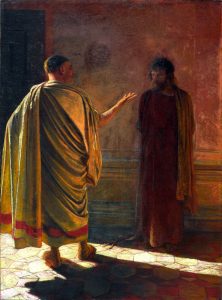
Sedigheh Khansari Mousavi illustrates how theology and philosophy do not necessarily have to be opposites, and can even mutually condition each other, using the example of Mīr Dāmād, who is considered one of the most important representatives of the school of Isfahan. His work al-Īqāẓāt serves as an opportunity to revisit and discuss the Kalām, which led debate about the “theory of action” and the “chain of causality”. Like Mīr Dāmād who in his treatise on the question of human actions and their causes, the author by means of a detailed structural analysis demonstrates that the revelation (waḥy) and understanding reason (‘aql) are perfectly compatible with one another.
Beyond cultural barriers, Islamic mysticism and intercultural insights - By Ali Asghar Mosleh
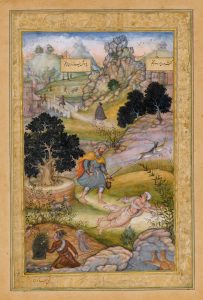
Mysticism has had a magnificent role in most cultures, particularly in cultures based upon world religions. Studies conducted in recent decades show that emergent mysticisms in different historical periods and territories, despite the great differences in terms of climatic conditions, historical experiences, language and other cultural elements, share similar roots and principles. One of the roles intercultural philosophy can play is to introduce a comparative study of these emergent mysticisms in different cultures in order to create an appropriate setting for dialogue and understanding between cultures. In this article we briefly examine the grounds of the emergence and development of Islamic mysticism (Sufism) in Iran and then discuss one example of its potential for intercultural insight and dialogue with other traditions.
How is the “burhan of God” expressed in Q 12:24? - A linguistic and exegetical analysis of the word “burhān” on the basis of classical Islamic compilations (Wie drückt sich der burhan Gottes in Q 12:24 aus?) - By Maassouma Dabbous
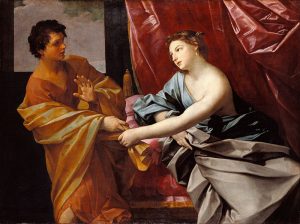
In the context of Yūsuf’s story and the meeting of Yūsuf and Zulaiḫā, the author searches for the secret behind the word “burhān” in Q 12:24. In doing so, she first of all explores the etymological and lexical meanings of this word before approaching the Qur’anic concept. Which “sign” of God did the Prophet Yūsuf actually receive in order to resist the seduction of Zulaiḫā? The author discusses this with the help of three different Qur’an commentaries, which also give each their own answers.
Rezension: Wie Luxenberg Jungfrauen in Weintrauben verwandelte - By Michael Nestler
Michael Nestler (Rezensent)
Kontaktiere uns!

